|
Saturday,
1st May; Hebei, Beidaihe
I had no plans to go to Beidaihe today, until that is I saw the weather forecast
late last night.
The weather bureau was forecasting a force 6 SW wind at Yantai (on the Shandong peninsular) and
force 5 SE wind at Tianjin, suggesting that there would be a nice "wind-loop" around the bit of the Bo Sea that
many (most?) Beidaihe fall-migrants cross.
So, despite the May Day holiday traffic, I thought it would be worthwhile
to drive the 290KM. Three and a half hours later, and with about four hours of light remaining I arrived in Beidaihe.
I decided to go down to the Magic Wood at Nandaihe, which despite being severely hacked in recent years still offers a tired
migrant a plentiful supply of food.
The wood was quiet for the first 50 yards, and then I saw something that I
had not seen for far too long: a Wryneck (276) .. closely followed by another one! I have a soft spot for
Wrynecks... probably stemming back to when I found one at Wells Woods in Norfolk when I was 15.
Other than the
Wrynecks, though, The first circuit of the wood was quite quiet (c10 Pallas's, a few Yellow-Browed Warblers; and afew Black-faced
Buntings).
On the second circuit, I manged to to put my bins on one of Beidaihe's signature birds... a male Siberian
Rubythroat (277) my earliest Beidaihe record by a few days. This bird was rather flighty though (perhaps signifying
a "just-in"). In the 10 minute chase before I lost is completely I managed to get no closer than 60 yards. But couldn't
resist posting a shot.
The third lap of the wood yielded a White's Thrush (further bolstering the idea that birds
were dropping in).
By the fourth lap, Pallas's Warblers had increased to c50, Yellow-browed Warblers to c30, Black-faced
Buntings to c10, and Dusky/Naumann's types to at least 4.
The weather forecast for tomorrow is good (strong winds
from the south to south-west again). So, fingers crossed.
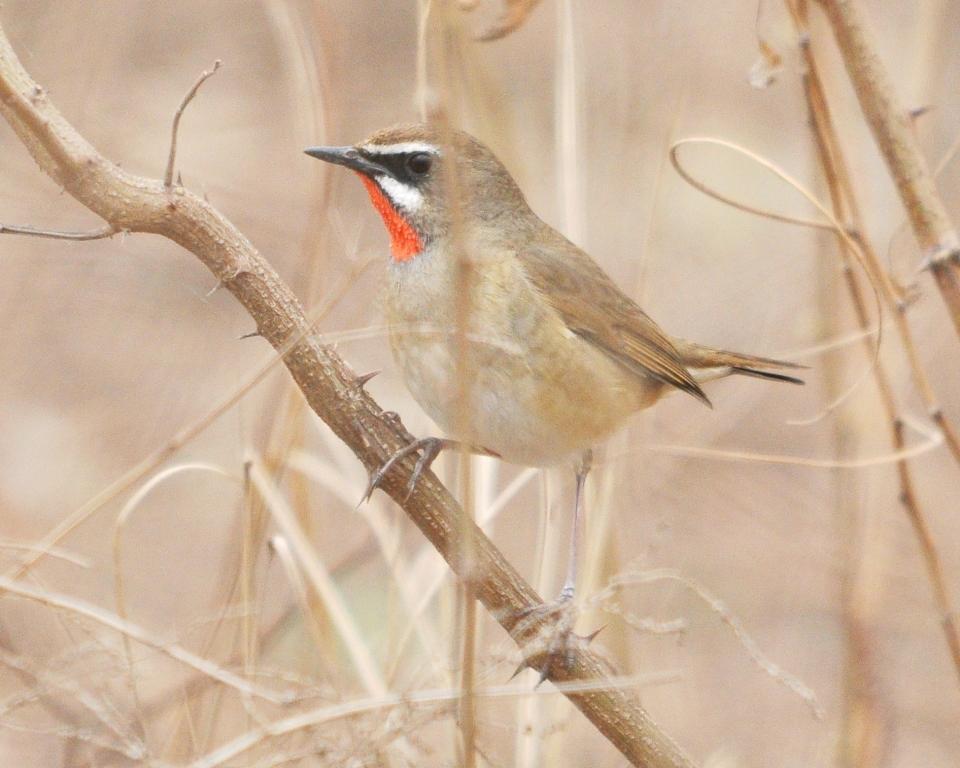
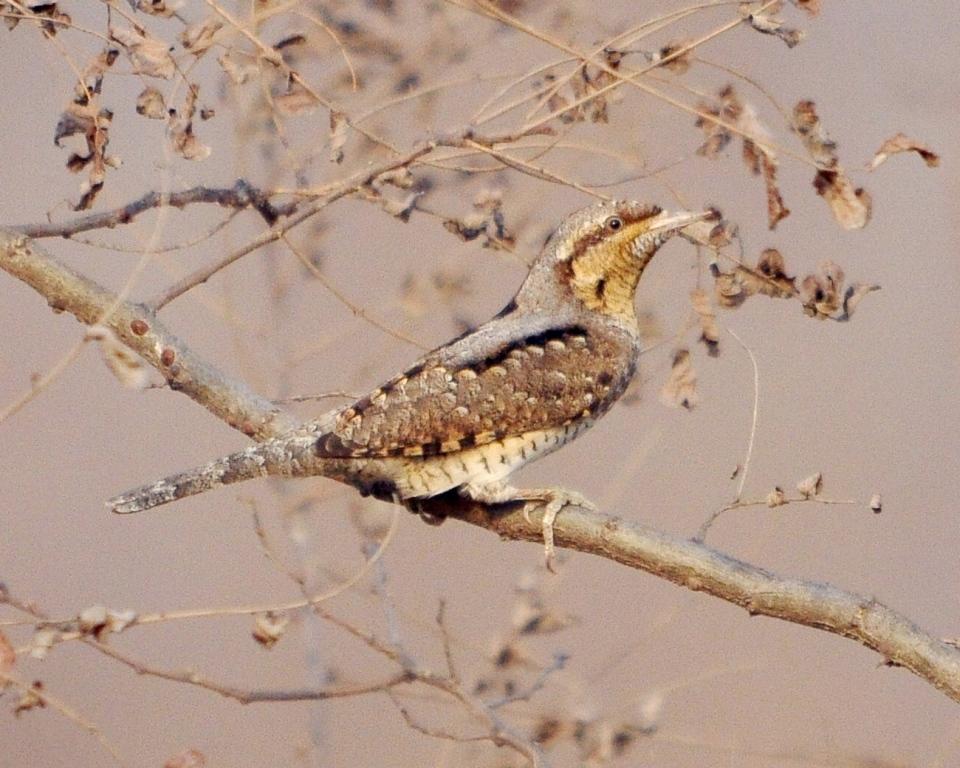
Sunday 2nd May; Hebei,
Beidaihe
24 species of wader today! Including 2 flocks of Little Whimbrel at the Sandflats (11 and 6).
I arrived on the shoreline of the Sandfalts at about 6.10am - a little later than I had intended. But just in time, because
no sooner had I arrived that I heard the distinctive whistling of Little Whimbrel (278) . I looked up, because
that's where they are most likely to be, but there was nothing in sight.
I then saw them. They were over the sea,
but closing fast. They were also coming straight out of the sun. I adjusted my camera by + 1 step (which gave me a 1/1500th
second exposure). 11 Little Whimbrels (278) then flew literally over my head. I fired off several shots and
crossed my fingers that I hadn't messed it up.
In a matter of half a minute of so, they were lost from sight
15 minutes later (at 6.30) I saw another flock cof six birds also coming in off the sea. This flock was in no hurry
to conninue northward, and circled the area several times before deciding that they's be better off elsewhere. In
about three hours there, as well as the 17 Little Whimbrels, I saw 4 Turnstone; a Bar-tailed Godwit (279); c30
Whimbrel (280) ; 2 dozen Red-necked Stint (281) ; several Kentish Plover; several Lesser Sand Plover,
most of which in full summer plumage; three or four Sharp-tailed Sandpiper (282); ; a few dozen Greenshank;
and 20 or so Marsh Sandpiper. 10am to 1pm: After the Sandflats, I checked out
the reedbed. I was surprised to find a flock of c30 Yellow-bellied Tits feeding in the canopies of seeding
trees near here. I had thought they'd be way north of here by now. But just goes to shows that you can learn something every
time you go out of the house.
On to the "reservoir". I wrote about the mess this place was in a few weeks
ago, but despite it now being a building site, it's still good for birds. Assuming you can get past the security guards that
is. One came running after me to tell me to sod off, but I was having none of it. I'm afraid the frustration, caused by the
mess to my patch, more than bubbled to the surface. Anyhow, after my rant, he went away - no doubt convinced of my insanity.
My mood lightened considerably after I found two Amur Falcon (283) nests. What a spectacular bird
this is. If one ever turns up in North Norfolk, then expect traffic congestion on the A148.
The devastation at
the reservoir has only one plus point. You can now walk across the dry bed to the "private park" that's fenced off
to the public (and birders). I have never seen anyone here (other than gardeners). Another one of the many mysteries that
China holds.
One thing is for sure, it's a very quiet place with lots of excellent habitat (despite the landscaped
pools). It's here that I found an odd phyllosc (aren't they all). First I thought is was an Eastern Crowned (yellow
wash to under tail coverts and an excuse for a wing bar). It then started behaving in the manner of Claudia's Warbler...
single-wing-flicking and branch-slaloming. I didn't get that close to it (as you can see from the photo), and I actually didn't
watch it through my bins for more than a few seconds. But as well as the lack of two-prominent wing bars, it's head pattern
isn't quite right for Claudia's (As I understand, the end of the super should be closer to end of the median crown stripe).
Then again it doesn't seem right for Eastern Crowned either (the crown stripe is indistinct, and the super isn't doesn't kink
upwards). A feature in favour of Eastern Crowned, however, is the width of the bill-base (I have a head-on photo that shows
this). Odd. But in the interests of healthly debate I'll show it anyhow. Best not sweep these things under the carpet ;-)
BTW Claudia's Warbler used to be called Blyth's Leaf Warbler until someone with a DNA spectrumometer spotted something.
I wouldn't have bothered changing the name, except that Blyth's Leaf is now the name used for its cousin in SW China. Another
reason to use Claudia's is that I do like the name. I've removed "Leaf" because it is redundant.
There
were also 2 Wrynecks here, a Garganey, a few Dusky Warblers.
I then drove down to Nandaihe, where the Yang River
is perpetually high it seems ("thanks" to the downstream ford that seems to be blocking the tidal movement). I hope
I have got this wrong because the Yang estuary, historically, has been one of the best wader watch points on Earth. No birds
here today though.
In the Magic Wood (Nandaihe!) it's either feast or famine. Today I went hungry. Not even a phyllosc.
How strange this wood can be.
On to the Da Pu River (this might even be the Da Po river... the Chinese character
can be read both ways.. so I've been told). Either way, there were some good birds here: Several Fan-tailed Warbler zitted
persistently; c30 Marsh Sandpipers and c20 Greenshanks, and c15 Wood sandpipers roamed the pools. While watching their antics,
three brick-red Curlew Sandpipers (285) made an entrance. What fantastic birds. A summer-plumaged Mongolian
Gull could only stand and stare. As I was watching the gull, a flock of 3 ducks circled above. A male and a female Shoveler
with a male Falcated Duck... an unusual hanger-on to be sure (as well as a very late record). 1pm
to 4pm: Drove to Qilihai, where it was high tide (the worst time to visit). So, not much there.
Back
at Nandaihe, The few remaining ponds held several Greenshank (286) and Wood Sandpipers (287).
While I was watching these, a ridiculously-bright "Eastern" Black-tailed Godwit flew in... with
a Marsh Sandpiper (288) in tow. I say "Eastern" because the rufous on this bird's underparts did
not extend down to its thigh (as I understand should be the case). In fact, the underparts (and upperparts) looked more like
"Western" to me. Then again, it did have a black forewing (as you can see in the flight photo). Could this be a
"Central" Black-tailed Godwit I wonder ;-)
And to round the day off nicely, a couple of Oriental Pratincoles
treated me to a fly-pass. Then again, they may have been out-of-range "occidental" pratincoles. ;-) They were far
too high-up to say for certain. Whatever they were, they were the 24th species of wader of the day. [Sounds
like a lot, but actually fewer than half the number on the Beidaihe wader list!] 2nd May list
of 24 species of wader:
Grey Plover
Little Ringed Plover
Kentish Plover
Mongolian Plover
Snipe
black-tailed godwit
Bar-tailed Godwit
Little Whimbrel
Whimbrel
Eurasian Curlew
Far Eastern
Curlew
Common Redshank
Spotted Redhank
Marsh Sandpiper
Greenshank
Green Sandpiper
Wood Sandpiper
Common Sandpiper
Turnstone
Red-necked Stint
Temminck's Stint
Sharp-tailed Sandpiper
Curlew Sandpiper
Oriental (presumed) Pratincole
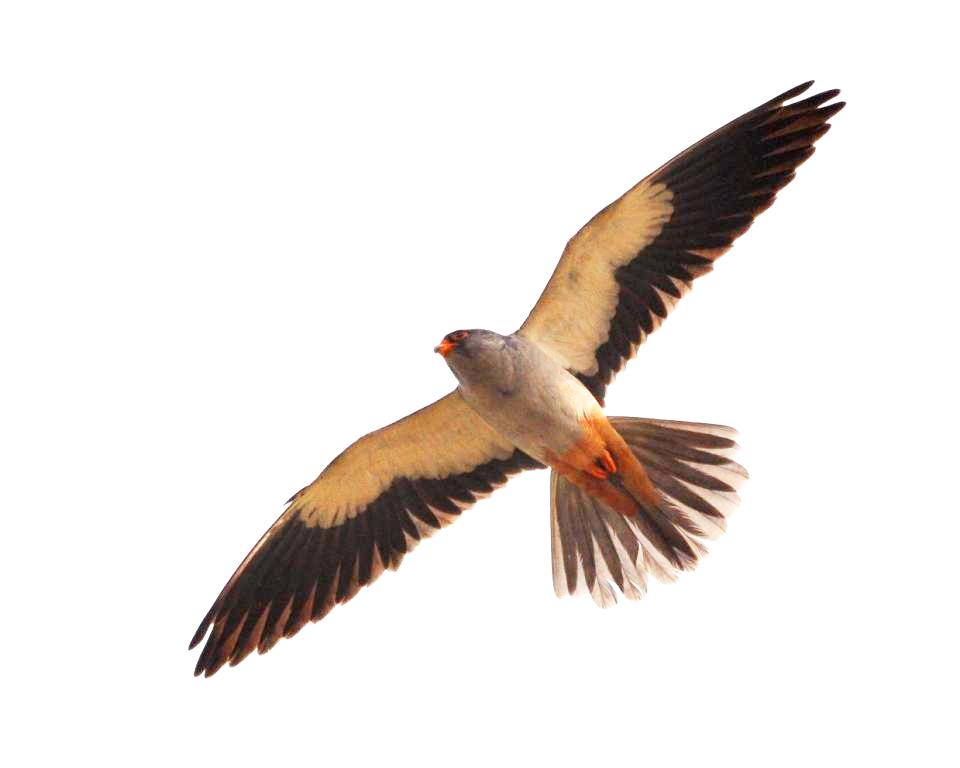
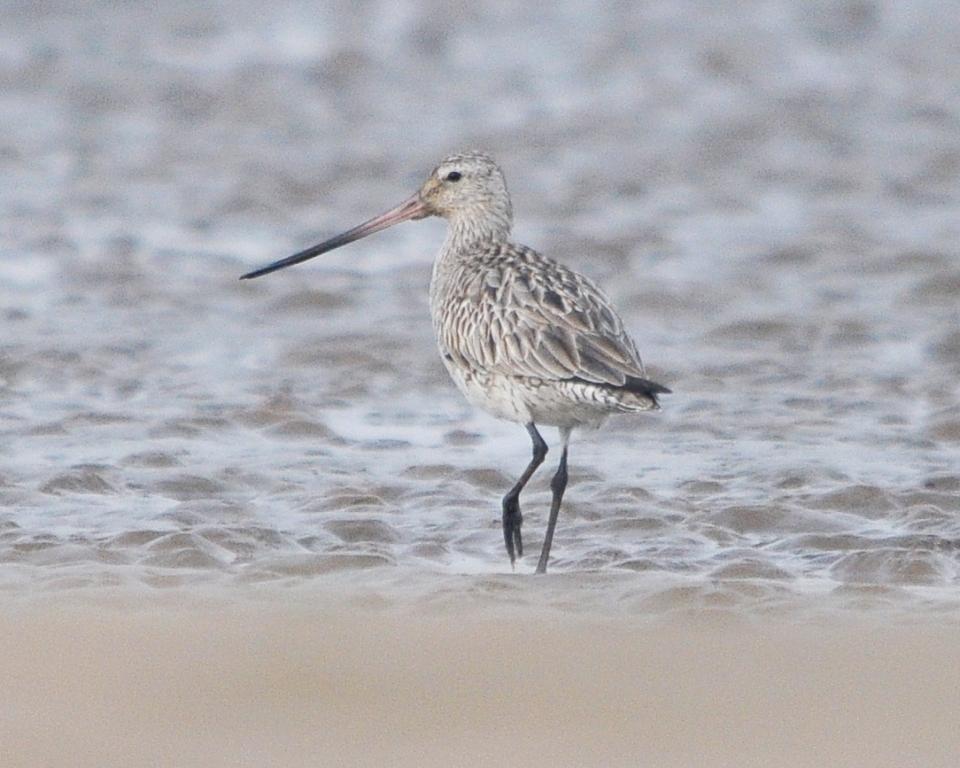
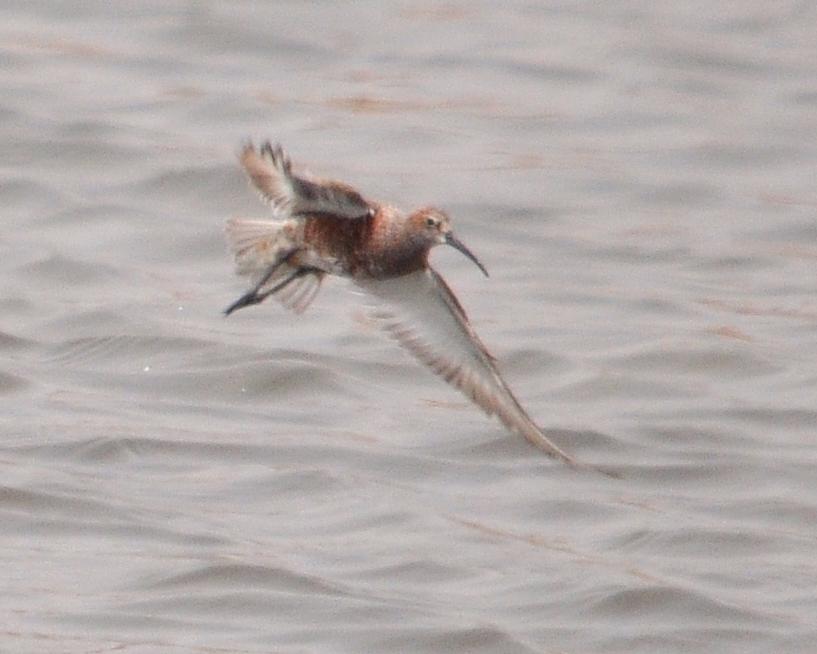
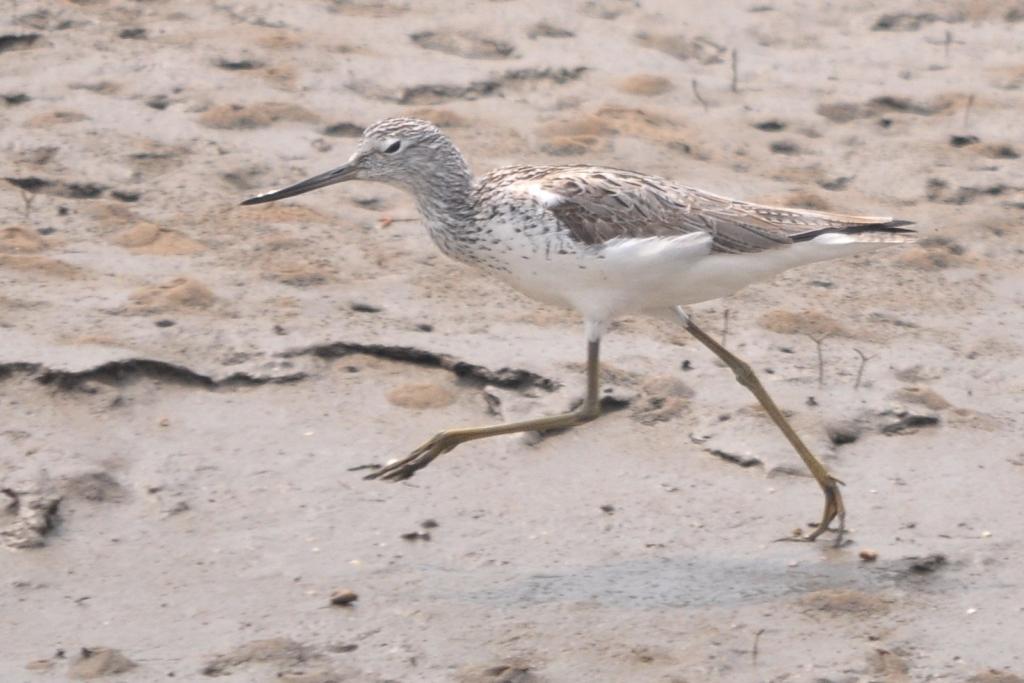
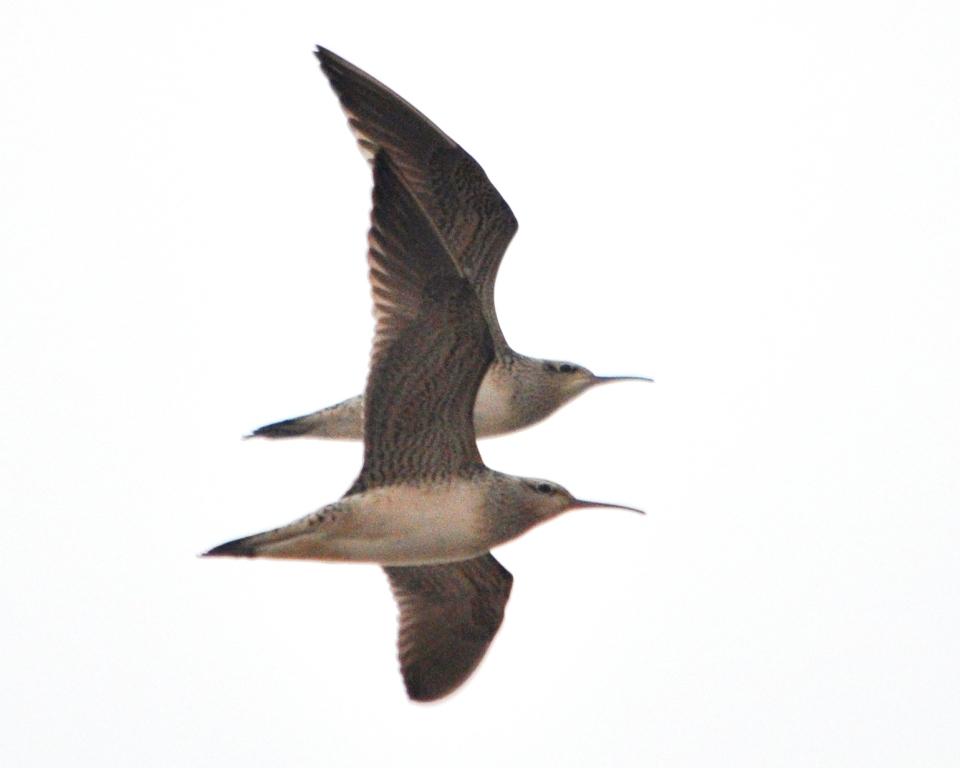
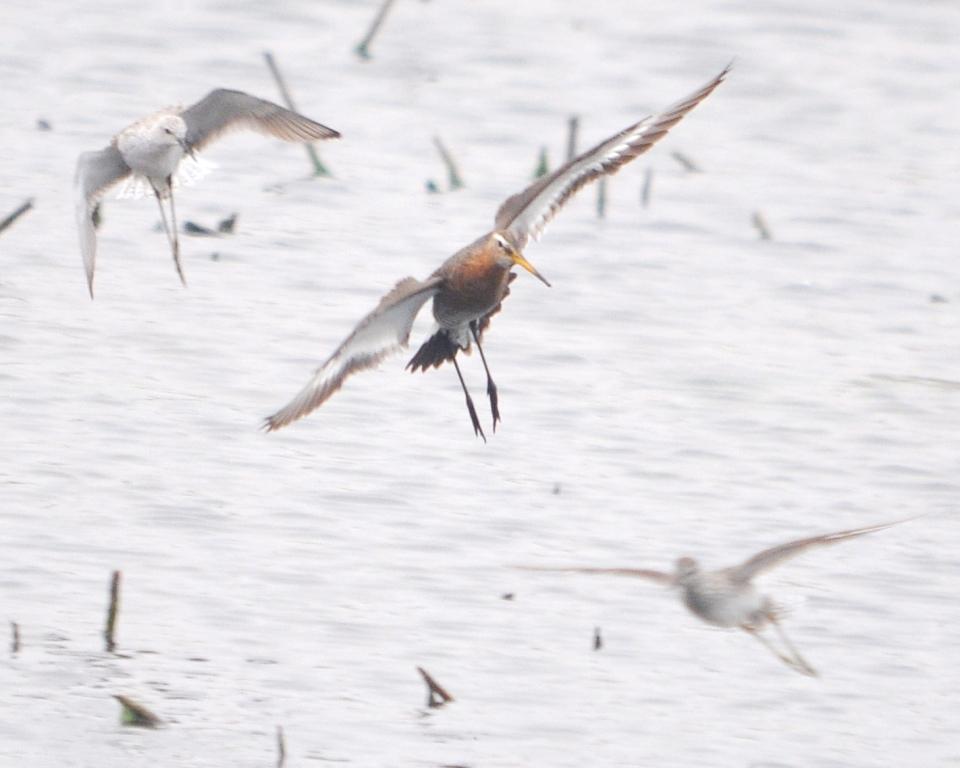
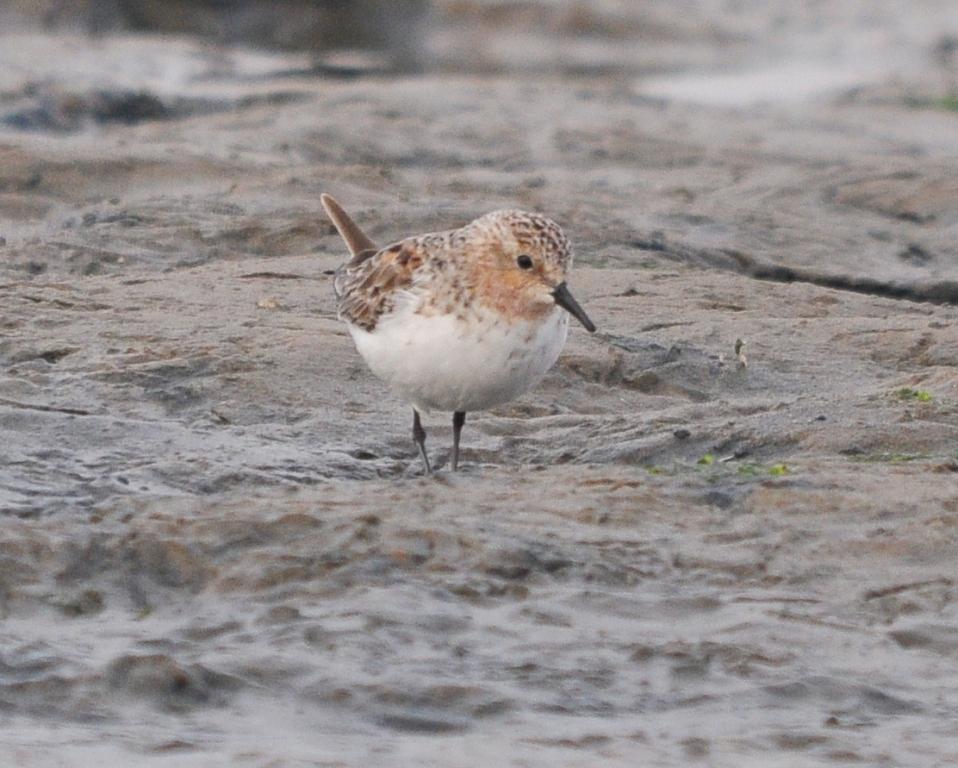
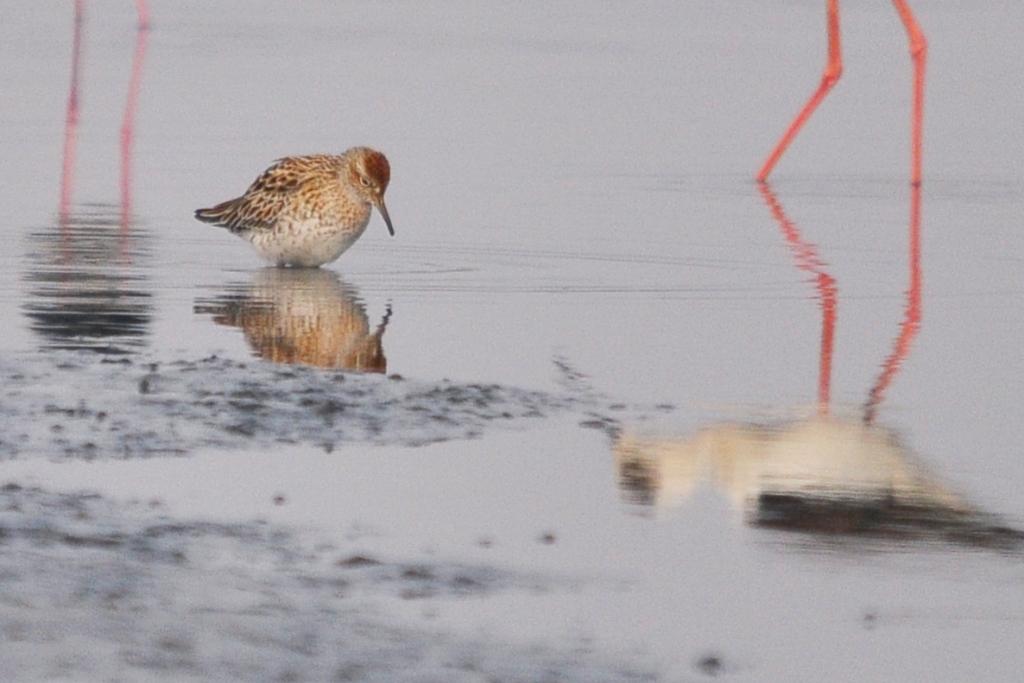
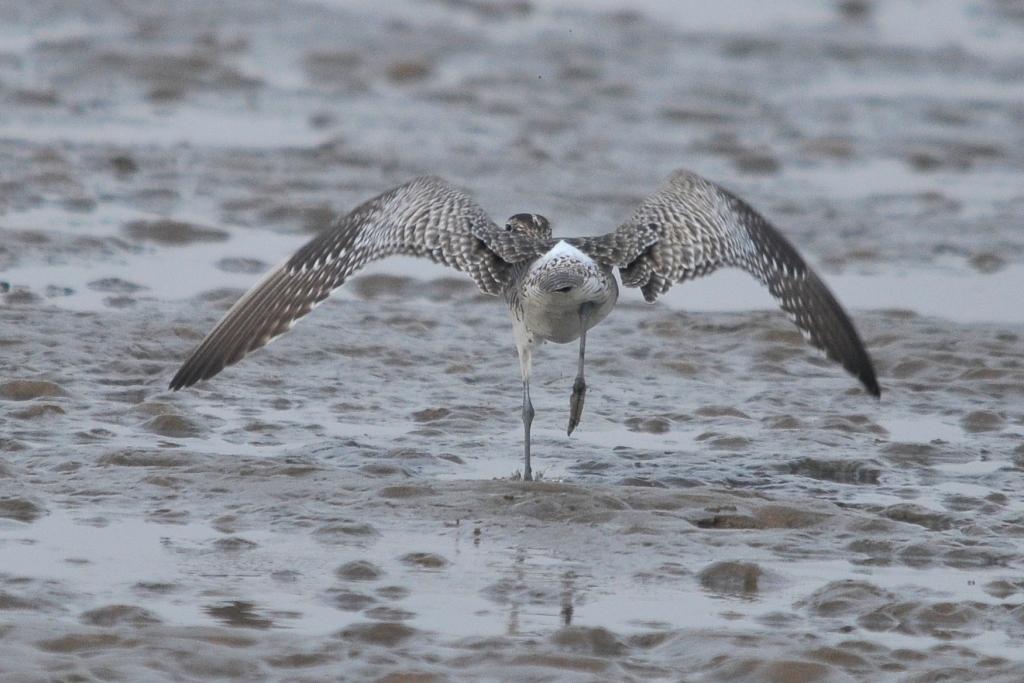
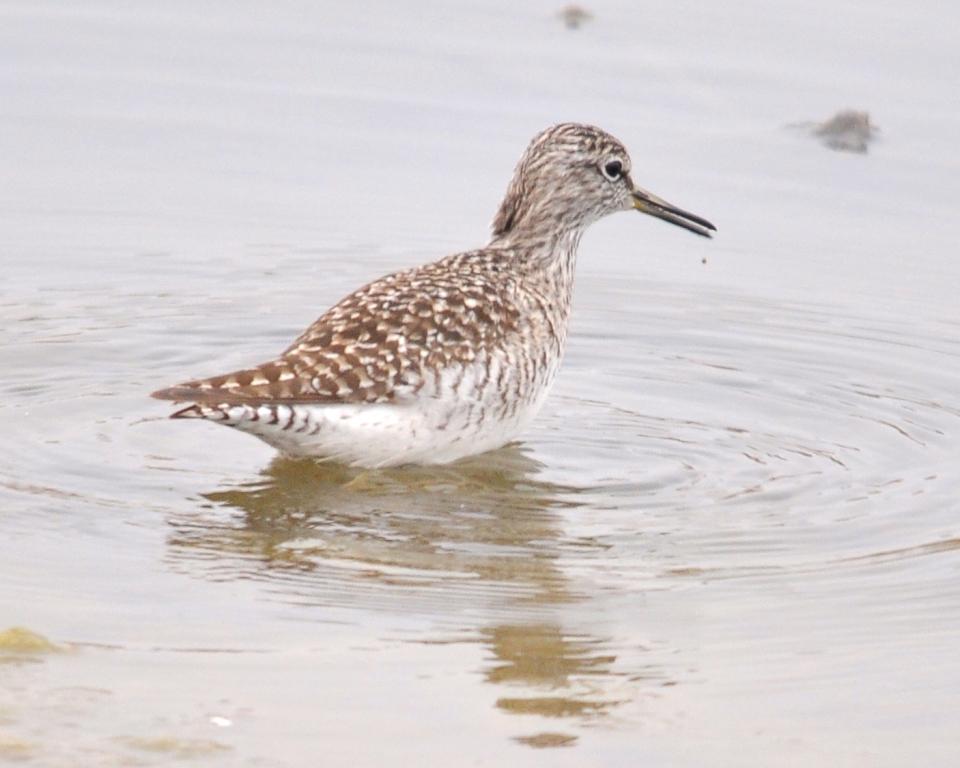
Monday, 3rd May;
Hebei, Beidaihe area
6am to 10am: Back at the Sandflats for first light... well, first light that
you'd want to take a photograph in at least.
A Mongolian Plover (289) allowed close approach (as
long as you don't mind blisters on your knees that is). Then at 6.40 I heard the distinctive whistle of Little Whimbrel again.
I looked up and saw a flock of 18 high in the sky flying northwards. After a minute or so, they came back, still high, but
a delightful sight nevertheless.
On to the Dai river area, on the Beidaihe side (Bei means north, he
means river. So Beidaihe is literally north of the Dai river. Whereas Nandaihe is south of it - (nan means south.
The first gem was the Grey-backed Thrush (290) , a first-summer male. Closely followed by a very
showy Bluethroat (291) , one of my favourite birds. The next gem was a rather splendid Yellow-browed
Bunting (292) - another special bird for me... so special that I travelled from London to the Isles of Scilly many
years ago just to see one.
I then saw something move in the grass near to the wood pile the Yellow-browed Bunting
had perched on.... 10am to 11.30pm ...I watched two Red-throated Pipits (293) for about
twenty minutes, with brief pauses to watch the Black-faced Buntings and Eastern Yellow Wagtails nearby.
Then, at
10.45am, I saw something that, for me, heralds the real start of the Beidaihe spring... a male Yellow-rumped Flycatcher
(294) no less. What a bird! I could never grow tired of watching this amazing creature.
15 minutes later,
an unfamilar song led me to a bush with a Tristram's Bunting (295) in it.
With the memory card
already groaning under the weight of photos i'd taken, I drove to the Magic Wood at Nandaihe...
11.45am
to 1.15pm: Whoever wrote the song that begins, "If you go down to the woods today you're sure of a big
surprise" may well have been inspired by the Magic Wood in Nandaihe.
Today's magic consisted of Chinese
Song Thrush (296) ; three (two males and a female) Siberian Rubythroat, a few Dusky Thrushes; and
a Taiga Flycatcher (297) .
With only a few hours of the day left (scheduled to depart for Beijing
at 5pm) I made my way to the Sandflats reedbed - knowing that I could, with a bit of luck, crack the 300 species milestone
today.
Three species to go.
With birds literally dropping from the sky, shouldn't be that difficult...
should it?
1.45pm to 3.30pm: The Sandflats were packed with long-weekenders, making the most of Beidaihe's
fresh air. The Sandflats reedbed, thankfully, was only packed with birds:
In about an hour I saw four or five
Red-throated Pipits; a dozen or so Pallas's Reed Buntings, including a few stunning males; several Black-faced Buntings; a
few Eastern Yellow Wagtails; as well as several Yellow-browed and Pallas's Warblers that were feeding on the fringes of the
reedbed.
Then, just as I thought time was running out, and I would have to return to Beijing with the clock still
in the 200s, I saw two "new" buntings for the year in quick succession: a Japanese Reed Bunting (298)
and Chestnut-eared Bunting (299).
Frustratingly, there had been a flock of about 30 Chinese Penduline
Tits in the reedbed all along, but I had not managed to get the crucial shot that was "not that bad". Then one sat
out. Just as I was pressing the trigger it flew off. I checked the photo. A bit of a blurry take-off shot, but might be okay
I thought. I looked up from the camera and saw that not all the birds had flown off, there was one still swinging on a reed
stem. It too flew off as soon as it saw the camera, but not before I had managed to grab a "not that bad" shot of
it: Chinese Penduline Tit (300).
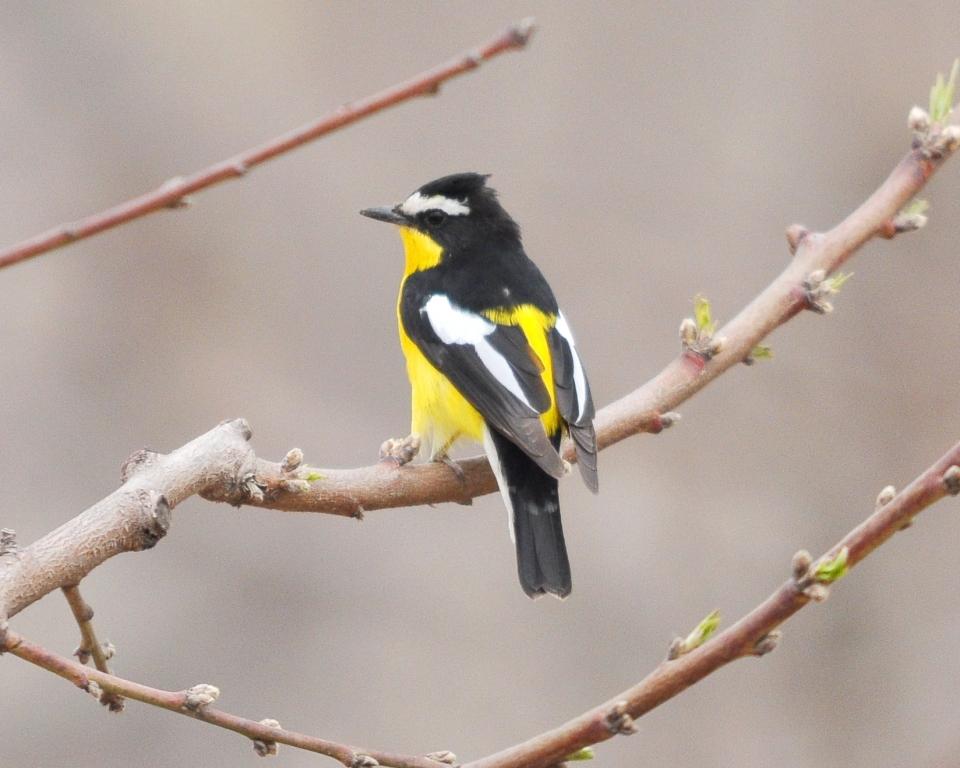
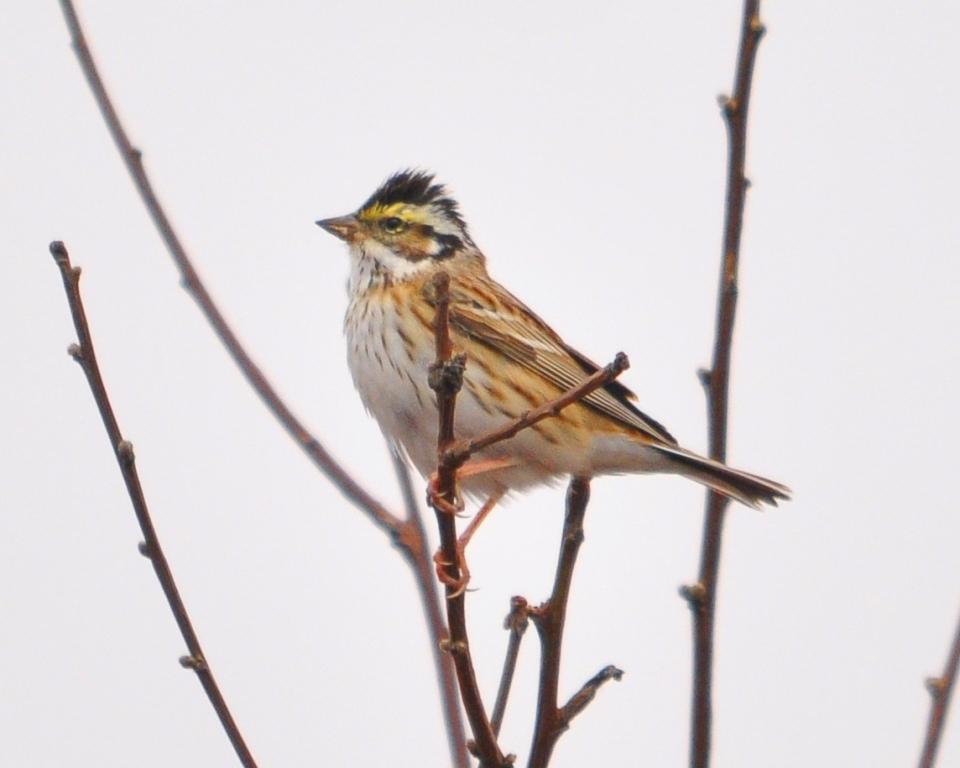
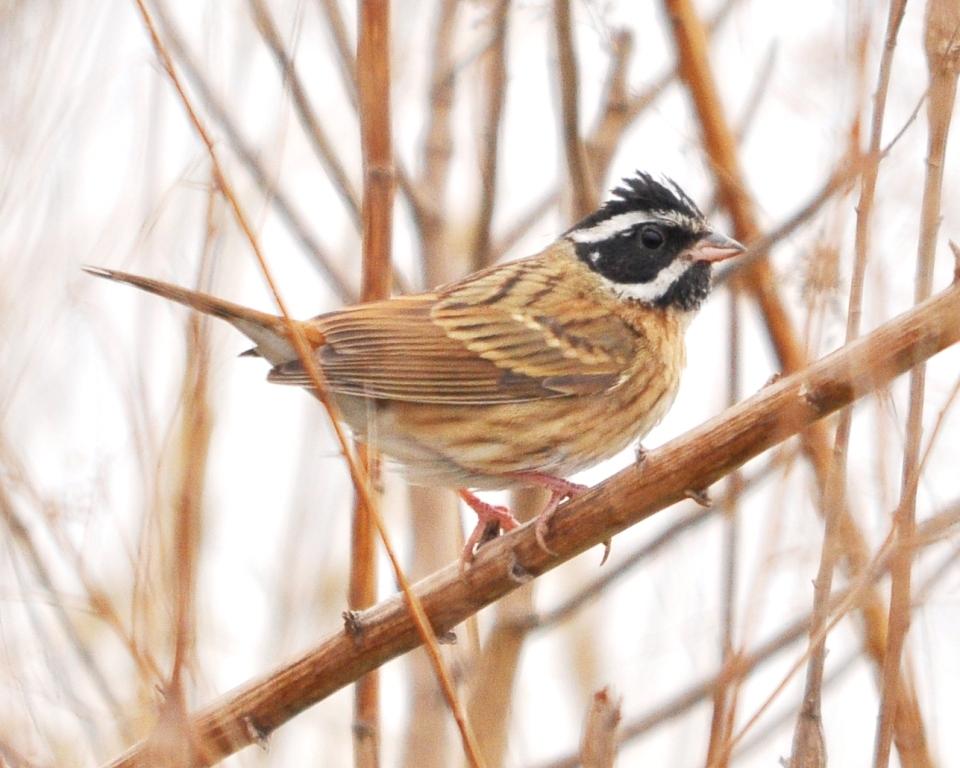
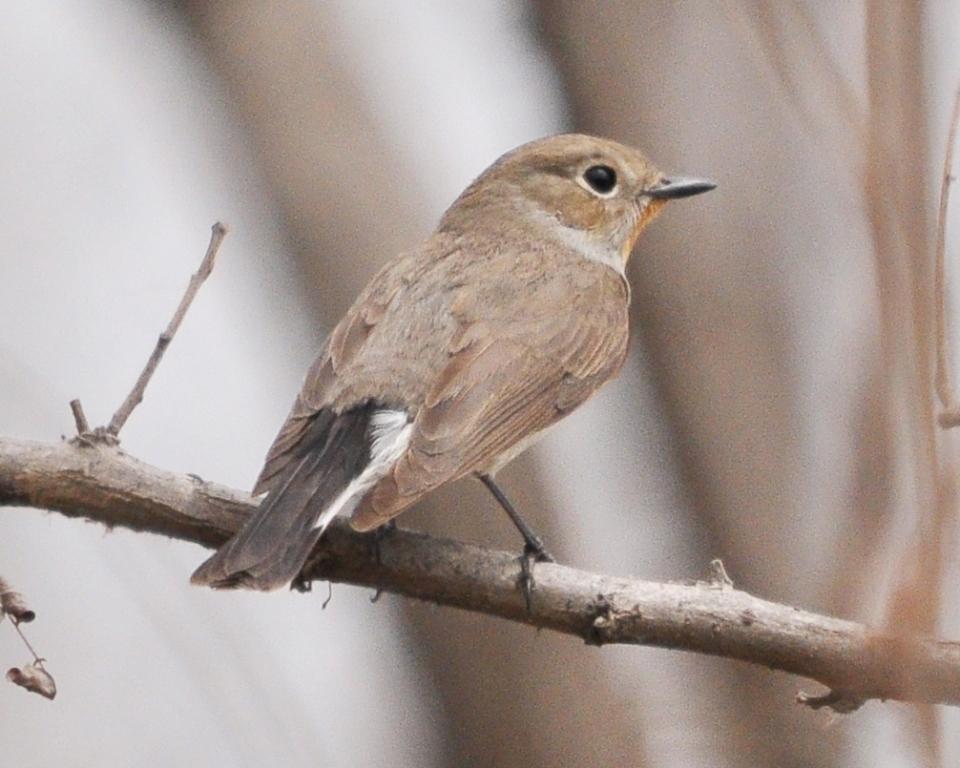
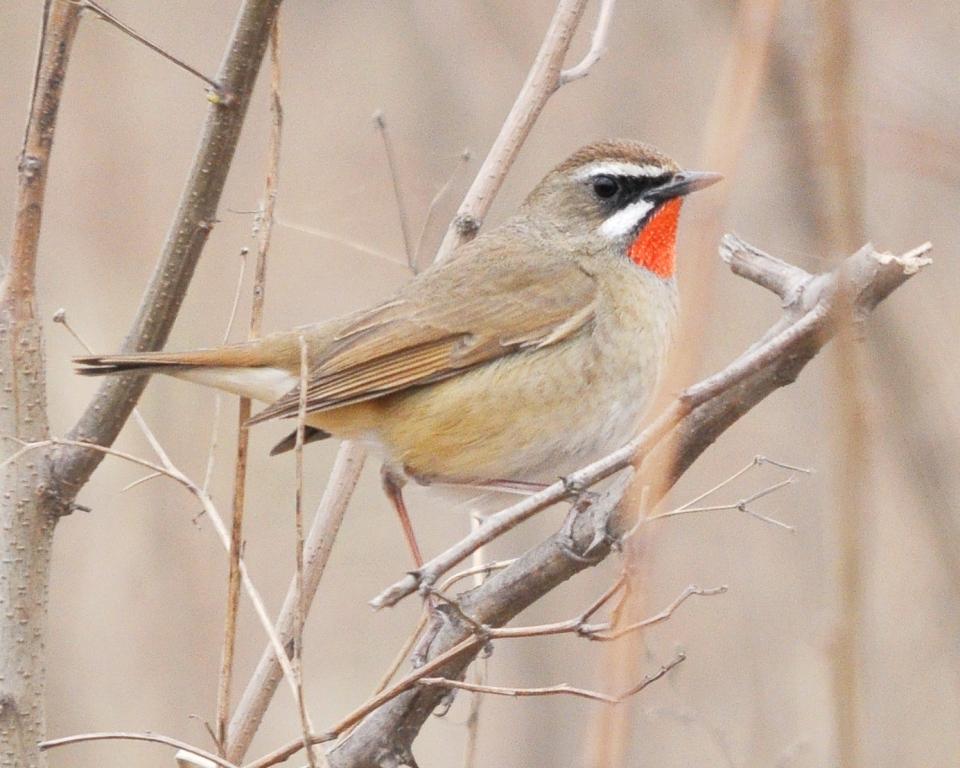
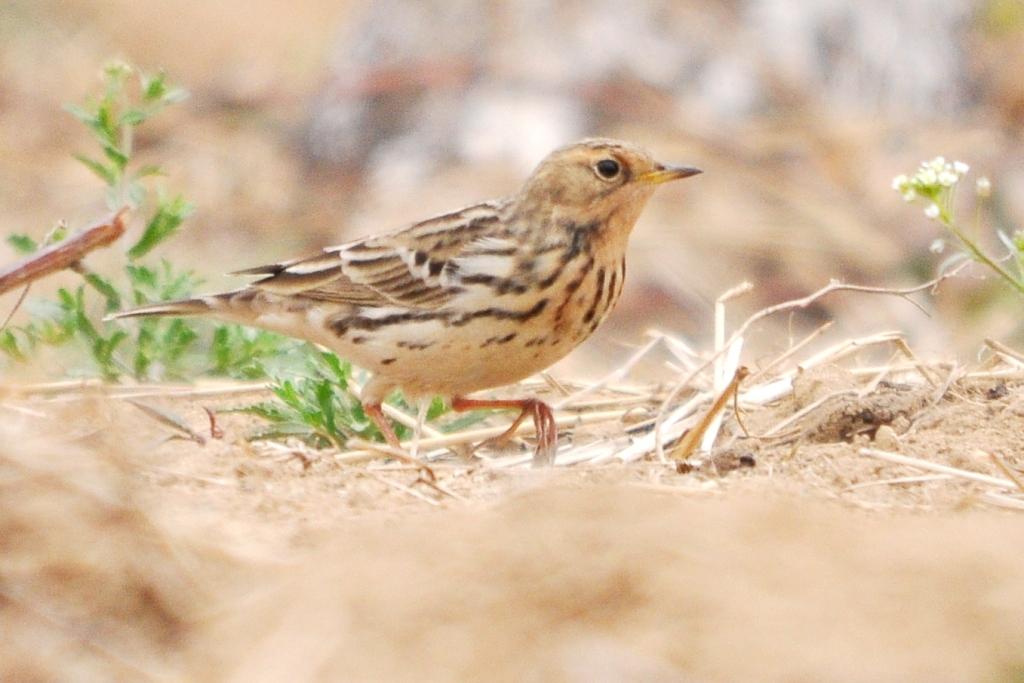
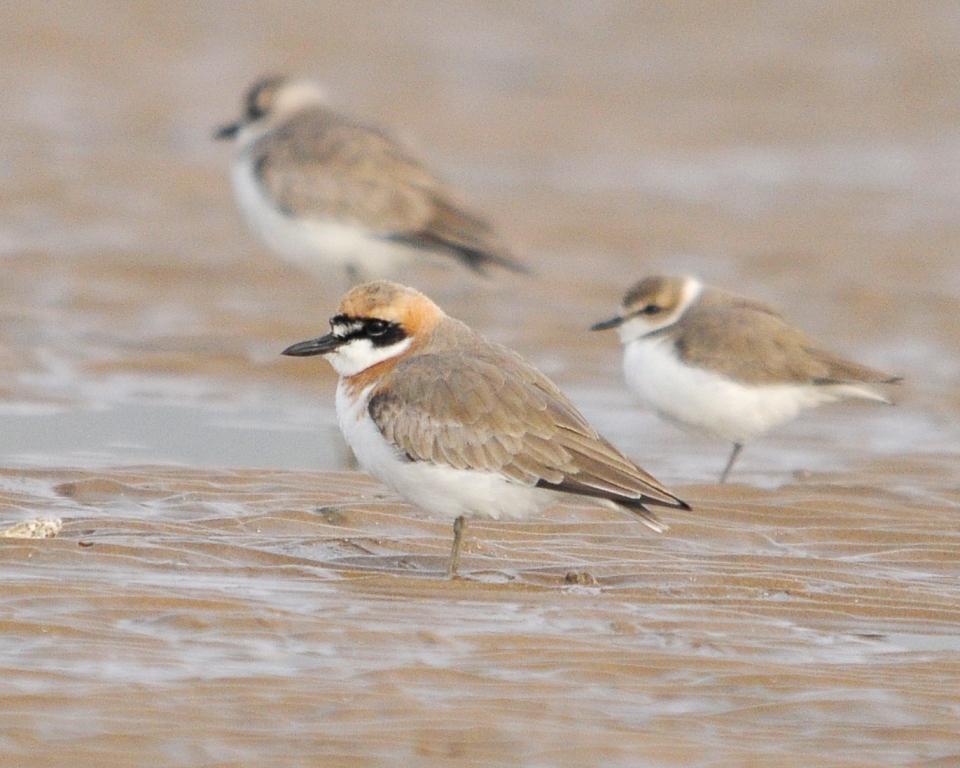
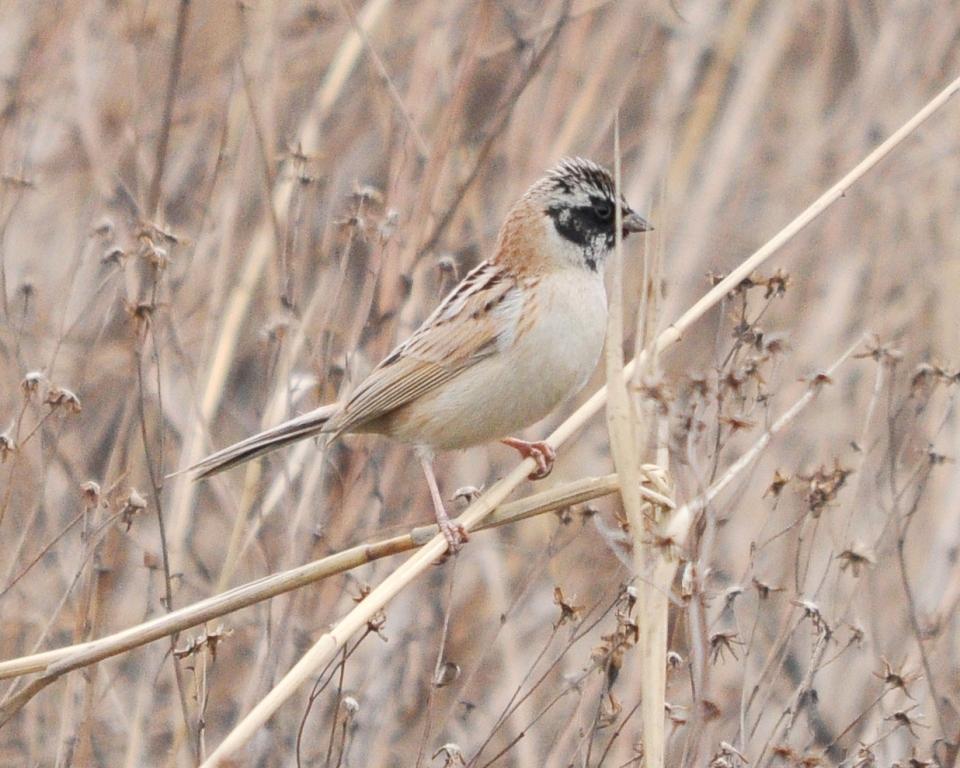
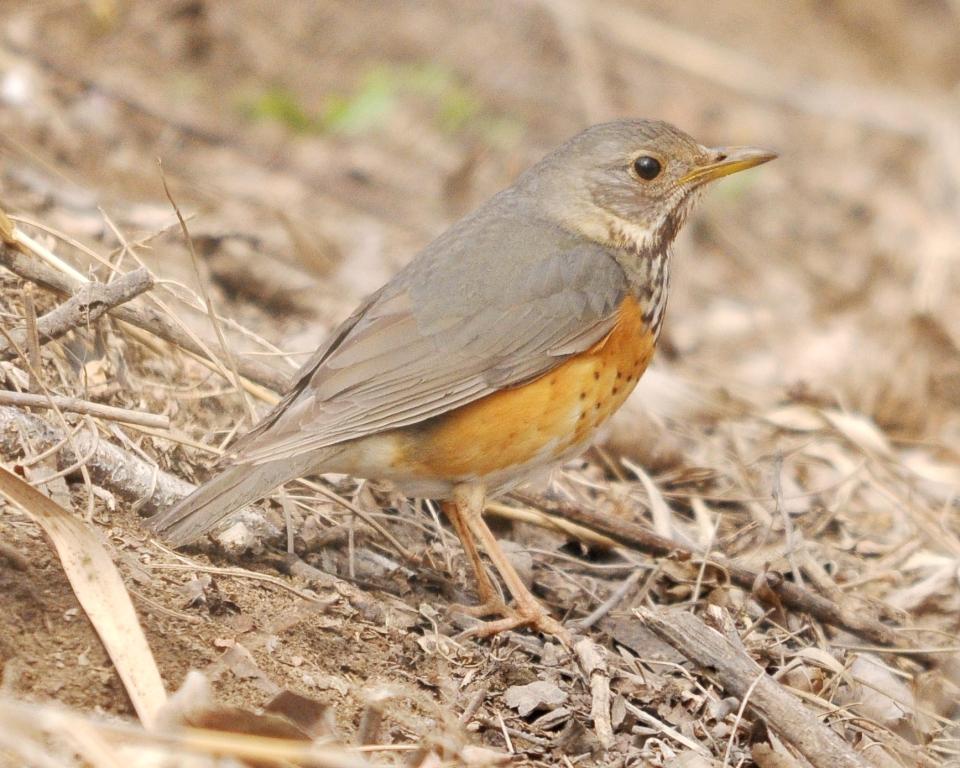
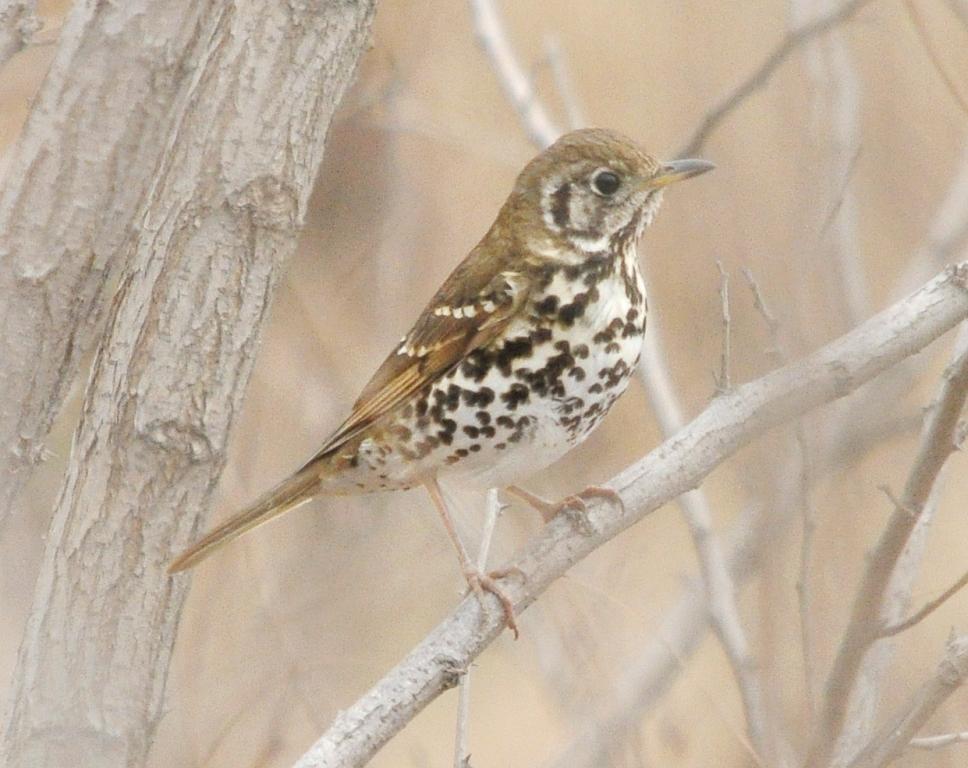
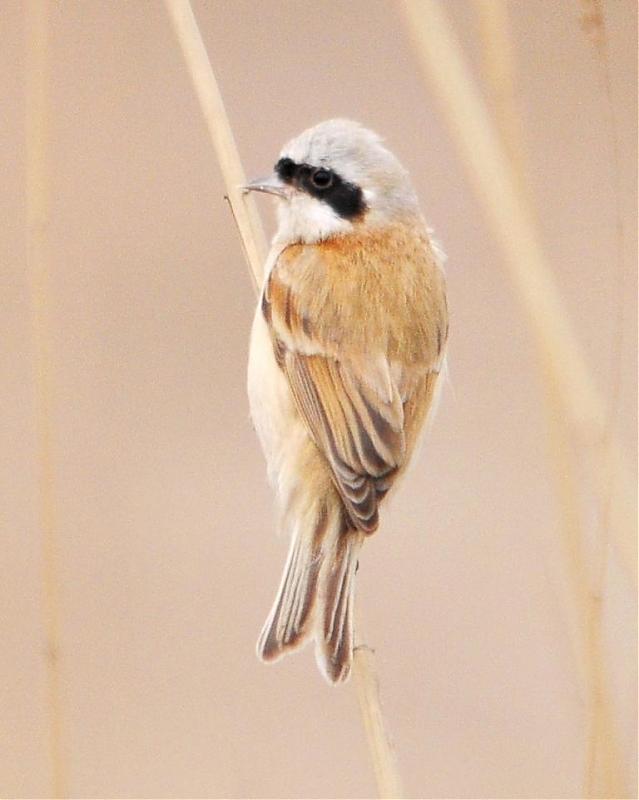
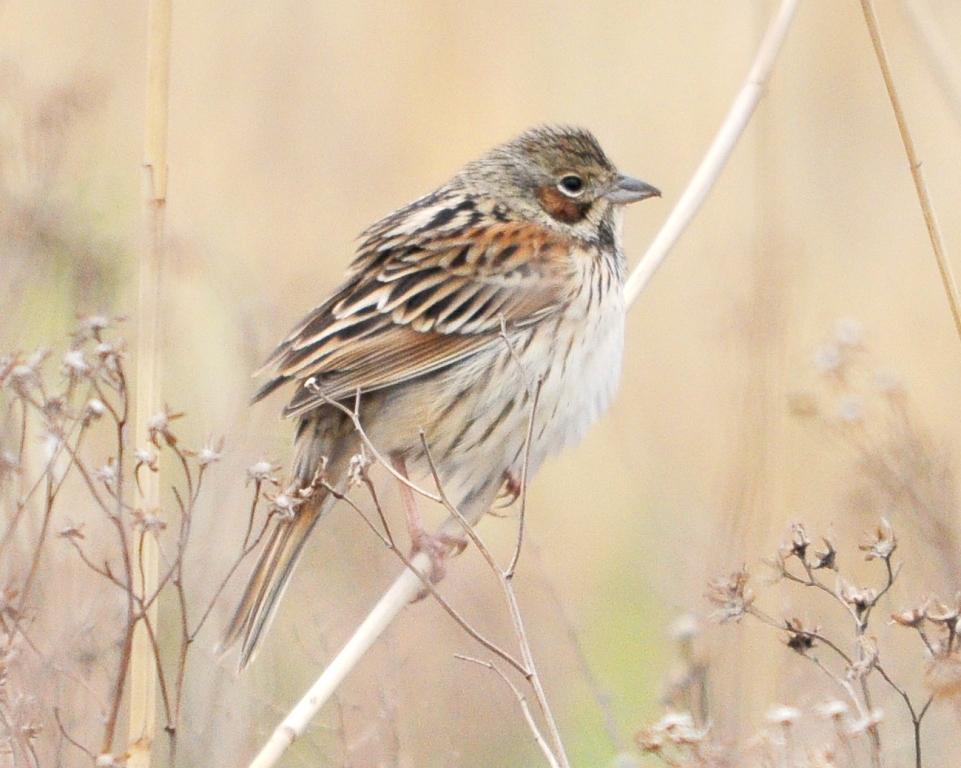
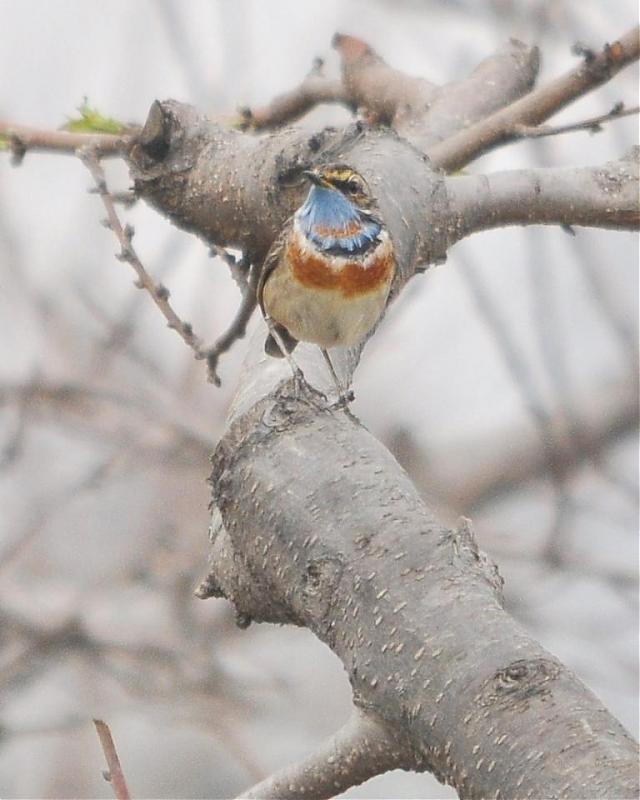
|

